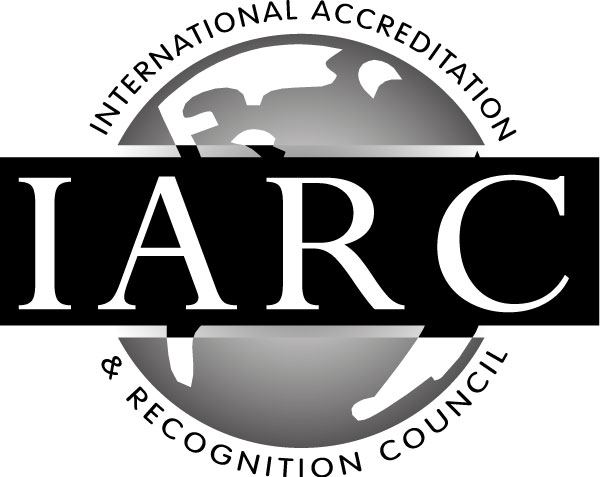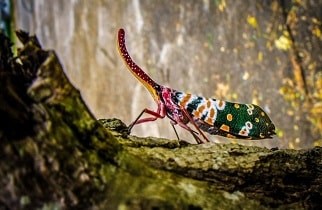Are you interested in invertebrates? Want to deepen your knowledge about them? This Invertebrate Zoology Course online will help you!
What are invertebrates?
An invertebrate is simply an animal without a central spinal column (such as the human spine). Because of this they are generally small animals, however that’s not always the case as an example the Colossal squid is the largest invertebrate on the plant and its comparable to a whale in size. Invertebrates are the most populous group of animals on the plant, and some would say, the most important. Anyone with an interest in animals, agriculture, ecology and the environment need to have a strong understanding of the invertebrate family.
Invertebrate zoology course covers insects, arthropods, mollusks, echinoderms, worms (and worm like animals), a range of microscopic invertebrates and more. The course should take approximately 100 hours of study over 12 months and is self-paced. You will receive full tutor support from our friendly and experienced tutors.
Why study this Invertebrate Zoology course?
Invertebrates form an essential part of not only general ecology food chains, but are absolutely vital to the production of our food. For example bees are responsible for pollination of many of our crops, with bee populations dwindling world wide it is essential that we understand them in order to learn how to protect them and maintain their populations. Ants play a very important role in seed distribution and so on.
Lesson Structure
- Introduction
- Significance to humans
- Comparative studies – invertebrate animals
- Important terminology
- Overview of Invertebrate Phyla
- Microscopic phyla -Tardigrada, Kinorhyncha, Loricifera, Placozoa
- Worms – Acanthocephala, Annelida, Hemichordata, etc
- Corals and relatives – Cnidaria, Ctenophora, Ectoprocta, Porifera
- Echinoderms and Molluscs – Echinodermata, Mollusca, Brachiopoda
- Complex Invertebrates – Arthropoda
- Protozoa or Animalia
- Phylum Nematoda
- Mites
- Phylum Tardigrada
- Adaptability and Survival
- Anhydrobiosis
- Cysts
- Phylum Kinorhycha
- Phylum Loricifera
- Phylum Placozoa
- True worms vs Worm like organisms
- Worm evolution
- Bilateral symmetry
- Cephalisation
- Body organisation
- Characteristics and systems showing complexity
- Phylum Platyhelminthes (Flatworms)
- Free living flatworms
- Parasitic flatworms
- Significance to Humans – Liver fluke, blood flukes, tapeworms
- Beef tapeworm
- Phylum Nematoda (Roundworms)
- Phylum Annelida (Segmented Worms)
- Other Worm Like Animals – Acorn worms, ribbon worms, Spiny headed worms, etc.
- Coelomate Worms
- Introduction
- Phylum Cnidaria
- Hydrozoa
- Scyphozoa
- Cubozoa
- Anthozoa
- Cnidaria and Humans
- Phylum Ctenophora
- Phylum Porifera – Location, Internal & External Structures, Reproduction, Toxicity
- Classes within Porifera
- Finding food
- Phylum Echinodermata
- Crinoidea – Sea Lilies and Feather Stars
- Ophiuroidea -Brittle stars, Basket Stars
- Asteroidea – Sea stars or Starfish
- Case Study – Crown of Thorns Starfish
- Echinoidea -Sea urchins, Heart urchins, Sea dollars
- Chass Holothuroidea – Sea Cucumbers
- Phylum Mollusca – general characteristics and types
- Classification into Arachnida, Crustacea, Myriapoda and Insecta (insects)
- Origin
- Terminology
- Characteristic body parts
- Ecdysis
- Digestion, Respiration, reproduction and other systems
- Phylum Arthropoda
- Chelicerata (Chelicerates)
- Arachnida (Scorpions, Spiders, Mites and Ticks)
- Scorpiones (Scorpions)
- Araneae (Spiders)
- Acari (Mites and Ticks)
- Opiliones (Daddy Long-Legs)
- Merostomata (Horseshoe crabs)
- Pycnogonida (Sea spiders)
- Terminology
- Crustacea (Crustaceans)
- Class Malacostraca -Crayfish, Crabs, Shrimp etc
- Branchiopoda – Fairy shrimp, Water fleas
- Cephalocardia
- Remipedia
- Maxilopoda
- Sessile Crustaceans
- Sub Phylum Uniramia – millipedes, centipedes and insects
- Origin of insects – winged vs non winged
- Class Entogantha -Collembola, Diplura, Protura
- Class Insecta
- Insect features
- Mouthparts
- Insect classification into 29 orders
- Specialised organs
- Reproduction
- Lifecycle
- Senses – vision, comminication
- Odonata -Dragonflies and Damselflies
- Mantodea – Mantises
- Orthoptera – Grasshoppers, Crickets, Katydids
- Significance to man
- Clean air and water
- Pollination by insects
- Edible insects
- Case Study – Grasshoppers save lives
- Order Diptera – Mosquitos and Flies
- Order Hymentoptera – Bees, wasps, ants, sawflies
- Order Coleoptera – Beetles, weevils
Enrol Now
- Experienced Tutor support
- Certificate sent to you
- Online study (Printed notes available)
- Self paced - no set timetable
- 12 months to complete course
From: $25.00 / week for 26 weeks
Get a Free Info Pack!











